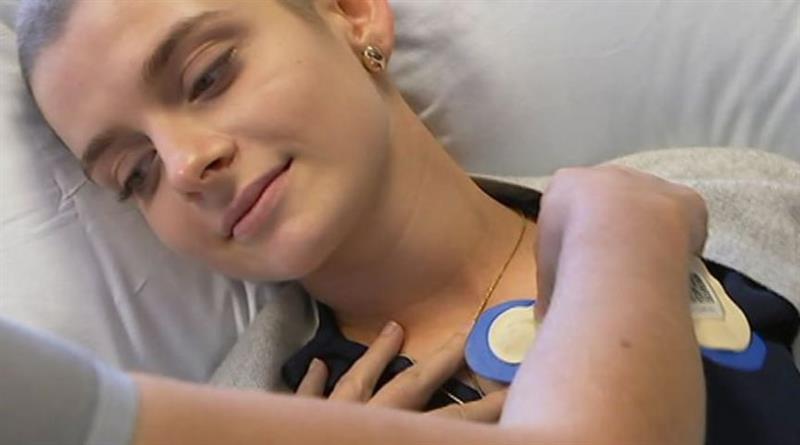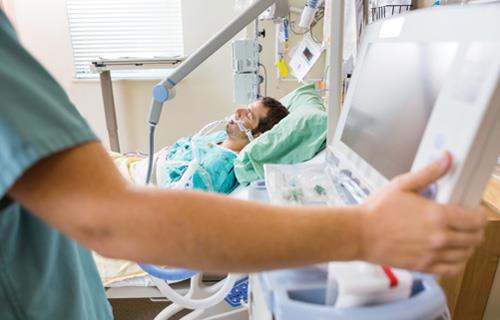But long-term trends in population profiles were already driving changes in attitudes in the healthcare sector to the use of technology and what it could do to alleviate the burden of nurses and doctors.
Jaquie Finn, global head of digital health at Cambridge Consultants, points to population statistics that indicate the number of over-sixties will exceed two billion by 2050.
“Elderly people have more chronic and persistent conditions. It’s estimated that, to treat them, we will need 18 million extra healthcare professionals,” Finn notes. “We are looking at a 55 per cent increase in the next decade. And it takes ten years to train a physician to be impactful in an area of their choice. We need to look at doing things differently: we can’t continue with business as usual.”
One area where technology could make a big difference in both efficiency and care is in the hospital itself.
“When I was looking at sepsis I was really shocked,” says Finn, pointing to the 50,000 people who die from it every year. “It’s more than heart attacks in under-75s. It’s vital that we detect a deteriorating patient quickly.”
In the UK, this normally follows a largely manual track-and-trigger system. Nursing staff visit each patient in turn to record six parameters including breathing, consciousness and oxygen saturation. The readings are translated into scores that if they add up to five indicate a high risk of sepsis. But the assessment is episodic outside intensive care, taking place every few hours at best. In the hospital bed serious problems such as sepsis can set in far more quickly than can be tracked by the periodic bedside visits.
“We need to move from episodic to continuous monitoring,” Finn says.
Wearables armed with biosensors are obvious options. As part of a trial to work whether electronic sensors will cut the workload of nurses, a small hospital in rural Australia claimed to be the first to deploy an automated patient-monitoring across all its beds.
The Kilcoy Hospital north of Brisbane in Queensland only has 20 beds in total but the hospital expects, if it successful, the technology could be used not just in other facilities but to monitor patients as they recover in their own homes. The core of the trial is the Patient Status Engine developed by Isansys, which works with a variety of sensors.
Keith Errey, cofounder and CEO of Isansys, reckons the total saving in nursing could be 15 million hours in the Australian healthcare system alone.
An issue for hospitals, which inevitably have a high throughput of patients, is the cost of deploying wearables.
“Continuous monitoring seems a slam dunk but it’s an expensive thing to do. Wearable patches have to be treated as consumables. It’s costly and not really sustainable. The ideal is to have monitoring units above the bed rather than using wearables and access the six vital signs in a contactless fashion,” Finn argues. “I think this type of system could be available in the next decade. But there are several hurdles to overcome.”
The current prototype developed at Cambridge Consultants uses three cameras: one performing thermal imaging for skin temperature; and a combination of visible-light and time-of-flight cameras for heart rate and blink rate, which is used as a proxy for consciousness.
The system captures the heart rate every second and is gradually improving performance when it comes to dealing with the wide range of skin tones that such a system would need to handle in deployment. At the moment, people with skin tones at the darker end of the Fitzpatrick scale, which is used to gauge these tones, suffer from noise and have to be backed up with a contact sensor.
The ‘Holy Grail’
However, there is one parameter that eludes a contactless system and is problematic even for low-cost wearables.
“Blood pressure is the holy grail for contactless. But we think our rig is sufficiently advanced to be able to work on cracking that,” Finn says.

Above: Blood pressure remains the 'holy grail' for contactless
But five out of six may be good enough to justify bedside contactless monitoring with the remaining elusive parameter handled using regular measurements with a standard cuff or a wearable sensor. Even for wearables, blood pressure is a problem without the pressurised cuff, which would be highly intrusive in a continuously worn device.
Researchers have proposed a number of systems that use the same kind of pulse reading at the wrist or from a fingertip as that used for heart-rate to try to infer blood pressure.
Systems tend to be sensitive to body position and Omron claims to have overcome the problems with a wrist-worn smartwatch but it uses a miniature form of inflatable cuff.
For longer-term care, the cost of wearables becomes far less of an issue and the market increasingly overlaps with consumer-grade wellness monitors, from FitBits to dedicated sensors for monitoring sleep quality, glucose levels and other specific needs.
Suppliers such as CarePredict and Owlytics see wearables as important tools for monitoring the condition of residents in long-term care homes.
CarePredict’s design, for example, works together with fixed infrared emitters detected by the wearables to help locate each resident as they move around.
In the shorter term, the Covid-19 pandemic has focused attention on what might be possible with consumer-grade devices. Although it is unclear what value they will bring to epidemic control and the healthcare services in charge of the response, a number of institutions around the world are recruiting users of fitness and wellness wearables with some focusing on clinical-grade devices.
Germany which is already operating a widespread tracking system based on clinical tests is looking to expand its ability to plan by accessing fitness-tracking data.
The Robert Koch Institute, the agency responsible for disease control and prevention in Germany, aims to use an app developed by start-up Thryve to collect data from popular smartwatches and fitness wristbands.
Though it is starting with 5 per cent of the state’s population of fewer than 40,000 people, Liechtenstein is to distribute wristbands originally developed for pregnant women to help monitor temperature, breathing and heartrate.
In the US, Duke University has kicked off a programme called CovIdentify to try to align medical diagnoses with longer-term data from consumer wearables that might show early warnings of infection.
Work at Assuta Hospital in Ashdod, Israel is focusing on the blood-oxygen sensors that are found in a significant minority of wearables and smartphones in the belief that oxygenation shows a stronger connection between easily readable metrics and infection than other readings.

Above: The current pandemic has placed a spotlight on telehealth tools
At this stage, the correlations between Covid-19 infection and symptoms that show up on wearables are not clear but Victor Camlek, principal analyst at Frost & Sullivan, says the data collected is likely to be useful. “Anything that shows changes helps. It may not be clinical tool and not able to provide a detailed diagnosis but people conducting the surveys can find different aspects of the diseases they haven’t known about before. We have been finding that asymptomatic carriers are very much a challenge so anything that shows a difference that could be warning sign will help. As we get into the data analytics for this, anything that provides accurate data will have a place.”
Camlek says the use of wearables to help in healthcare rather than just functioning as fitness indicators for users is likely to continue one the first wave of the pandemic passes. Social distancing may continue for some time and hospitals and surgeries may put much more emphasis on telemedicine. “The ability to have virtual visits becomes more valuable for the practitioner. We don’t want it to be a slam-dunk decision that if you get sick you go to the hospital unless you have a requirement for a critical intervention. You can instead use a wearable device to collect data and use more video interaction.
“The pandemic has placed a spotlight on telehealth tools that have the opportunity to prove themselves. The major problem they will face is: will they scale? And how do we make sense of the data they collect?”













